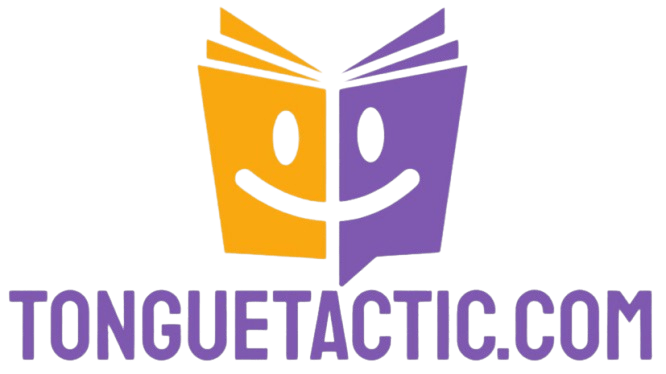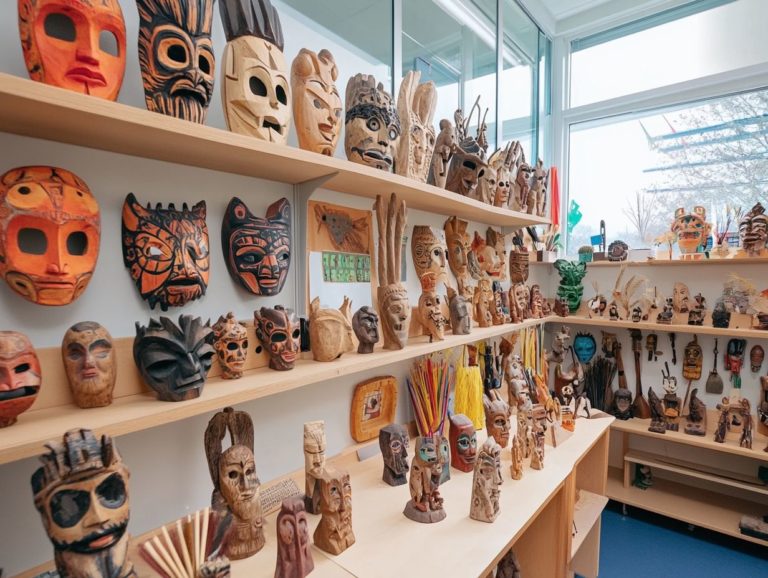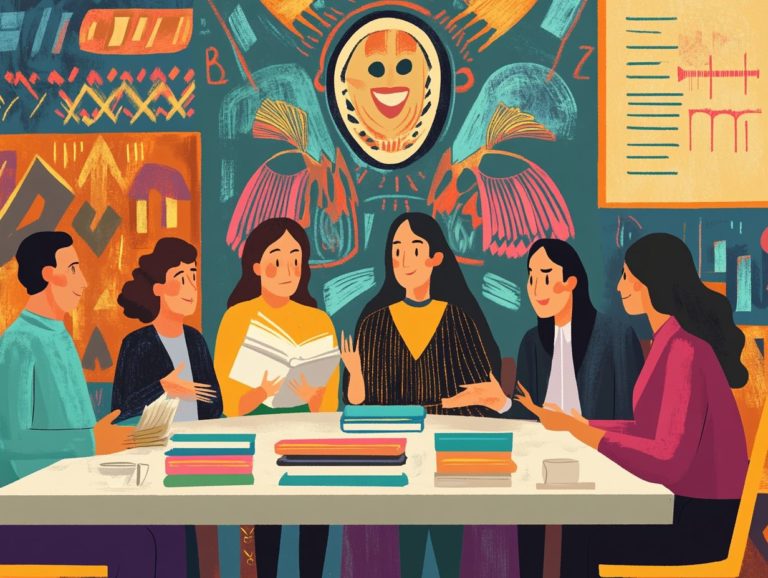understanding multilingualism in cultural context
Multilingualism transcends the mere ability to speak various languages; it weaves a rich tapestry of cultural exchange and understanding that enriches our lives.
This exploration delves into how culture shapes language use and learning, the myriad benefits that arise from embracing multilingualism, and the challenges you might encounter while navigating language barriers and identity.
This article discusses effective strategies to promote multilingualism, emphasizing its significance in forging deeper connections across diverse cultural landscapes.
Discover how multilingualism can transform our interconnected world!
Contents
- Key Takeaways:
- Cultural Context of Multilingualism
- Benefits of Multilingualism in Cultural Context
- Challenges of Multilingualism in Cultural Context
- Promoting Multilingualism in Cultural Context
- Strategies for Encouraging Multilingualism
- The Importance of Embracing Multilingualism in Cultural Context
- Frequently Asked Questions
- What is multilingualism in cultural context?
- Why is understanding multilingualism in cultural context important?
- How does multilingualism impact cultural identity?
- What are some challenges in understanding multilingualism in cultural context?
- How does globalization affect multilingualism in cultural context?
- What are some strategies for promoting understanding of multilingualism in cultural context?
Key Takeaways:

- Multilingualism is the ability to speak multiple languages and is influenced by cultural context.
- Understanding multilingualism in cultural context promotes enhanced communication, cultural understanding, and cognitive and social benefits.
- Navigating language barriers and promoting multilingualism can help embrace diversity and foster a more inclusive society.
Defining Multilingualism and its Importance
Multilingualism is your gateway to engaging with multiple languages effectively. This skill is becoming increasingly essential in our interconnected world, where communication across diverse cultures is key.
It plays a vital role in fostering deeper cultural understanding while enhancing your mental adaptability and promoting cross-border collaboration.
Scholars like Larissa Aronin and Muiris Laoire emphasize the importance of multilingualism in language acquisition and identity formation. This focus is invaluable for linguists and educators alike.
Within this spectrum, multilinguality encompasses a broader range of language proficiency, while bilingualism specifically refers to fluency in two languages.
Each form brings unique advantages and challenges. For instance, bilingual individuals often navigate cultural contexts with ease, enriching their perspectives in the process.
Research published by the American Council on the Teaching of Foreign Languages highlights how multilingualism boosts cognitive abilities and acts as a bridge for cultural exchange. This allows for deeper connections between communities.
This dynamic interplay of languages fosters inclusivity and mutual respect, ultimately enriching the global tapestry of human experience.
Cultural Context of Multilingualism
The cultural context of multilingualism profoundly shapes how you navigate and harness your language skills. It impacts various aspects like language-switching tasks and managing cross-language interference.
Understanding how culture and language interact is crucial for effective learning. Grasping this relationship allows multilingual individuals to deploy their linguistic resources across diverse settings.
Factors like reactive and proactive language control come into play, influencing whether communication flows smoothly or encounters obstacles. This is all dependent on the cultural environment you find yourself in.
Influence of Culture on Language Use and Learning
Culture shapes your language use and learning. It influences not just the vocabulary and grammar of the languages you speak but also the way you acquire them through contextual cues.
The dynamic between culturally-biased and culturally-neutral images in educational settings highlights how cultural context can either facilitate or hinder your language acquisition as a bilingual.
For instance, research indicates that in collectivist cultures, where community and relationship-building hold significant value, language learning emphasizes communicative competence over rigid grammar rules.
In contrast, individualist cultures may prioritize precision and correctness in language education. Studies suggest that students from diverse cultural backgrounds employ various strategies, such as code-switching or contextual learning, shaped by their societal norms.
For example, learners from Indigenous cultures may lean more heavily on storytelling techniques, drawing from rich oral traditions that could uniquely enhance their language acquisition.
Acknowledging these variations enables you to develop tailored teaching methods that resonate with learners cultural experiences.
Benefits of Multilingualism in Cultural Context

The benefits of multilingualism go far beyond just being able to communicate in different languages; they encompass a deeper cultural understanding, cognitive flexibility, and significant social advantages.
In today’s globalized society, being multilingual is a vital asset. As a multilingual individual, you gain an enriched worldview, enabling you to navigate various cultural contexts with remarkable ease.
This adaptability enhances your interpersonal relationships and fosters a stronger sense of shared understanding among diverse cultures.
Enhanced Communication and Cultural Understanding
Enhanced communication stands out as one of the most significant benefits of multilingualism, giving you the power to navigate diverse cultural landscapes and grasp nuanced expressions in various languages. This skill becomes particularly vital in multicultural societies, where effective communication can lead to deeper cultural understanding and collaboration.
As you acquire new languages, your perspective broadens, enriching both your experiences and interactions. Such language skills can foster deeper relationships and enhance teamwork in global settings.
In multinational organizations, diverse teams flourish on mutual respect and understanding. A simple greeting in a colleague’s mother tongue can break down barriers, creating a more inclusive workplace atmosphere.
Language acquisition methods like immersion programs, conversational practice, and online platforms play a crucial role in honing these skills. By engaging with native speakers and immersing yourself in authentic cultural contexts, you not only improve your linguistic proficiency but also cultivate empathy and adaptability qualities that are essential in today s interconnected world.
Cognitive and Social Benefits
The cognitive and social benefits of multilingualism are impressive and well-established. Research shows that as a bilingual individual, you might find yourself experiencing enhanced problem-solving skills and greater flexibility in thinking.
Socially, your multilingualism opens doors to wider networks and richer social experiences, enabling you to connect more effectively with diverse groups. These attributes not only foster personal growth but also significantly enhance your professional opportunities in today s globalized workforce.
Research also shows that bilingualism is linked to improved memory retention, allowing you to access and recall information with ease across various situations. The ability to switch between languages sharpens your attention and concentration skills, making multitasking in both personal and professional environments more manageable.
Regarding cross-cultural communication, your multilingualism fosters empathy and respect for different cultural perspectives qualities that are invaluable in team settings or during international negotiations.
Studies show that professionals who speak multiple languages are often perceived as more capable leaders, underscoring the paramount importance of language skills in our interconnected world.
Challenges of Multilingualism in Cultural Context
While multilingualism undoubtedly brings a wealth of advantages, it also presents its fair share of challenges, especially when navigating language barriers and identity issues across diverse cultural landscapes.
You might find that expressing yourself fully or accurately becomes a struggle when language proficiency varies, which can lead to misunderstandings. For those who are not fully proficient in both languages, these challenges can impede meaningful engagement in conversations and interactions, making the experience all the more complex.

Language barriers can be tough to navigate. They become even more challenging when your cultural identity is linked to your language skills.
These barriers can lead to feelings of isolation and frustration. This is especially true in multilingual environments where cross-language interference complicates communication.
Understanding these dynamics is essential for creating inclusive spaces that respect and celebrate linguistic diversity. For example, consider a young woman from a Hispanic background.
In a predominantly English-speaking school, she might struggle to connect with her peers. This can lead to a sense of detachment and insecurity about her identity.
In community settings, this challenge can intensify. Her ability to engage in discussions may be hindered, resulting in missed opportunities for collaboration and connection.
Personal experiences often highlight how language challenges can lead to misunderstandings. These misunderstandings can reinforce stereotypes, impacting interpersonal relationships and overall cohesion within diverse communities.
By prioritizing active listening, mutual respect, and tailored support, we can help cultivate environments where everyone feels valued. This approach lets everyone s unique voice shine and fosters a genuine sense of belonging.
Promoting Multilingualism in Cultural Context
Promoting multilingualism within cultural contexts is crucial for nurturing inclusive societies. These societies should celebrate linguistic diversity and cultural heritage.
To foster multilingualism effectively, implement educational initiatives that honor various languages. Provide ample resources for language learning.
By enhancing cultural awareness and appreciation for diverse languages, we can create environments that support multilingual individuals and the exceptional skills they bring to the community.
Strategies for Encouraging Multilingualism
To foster multilingualism, integrate language programs into schools. Promote cultural awareness to celebrate our diverse languages.
Encourage schools and communities to implement initiatives that support language learning. Examples include language clubs, exchange programs, and culturally-themed events.
These methods enhance language skills and cultivate a deeper appreciation for various cultures.
Successful case studies, like the ‘Dual Language Immersion Programs’ in various U.S. states, showcase remarkable outcomes. These programs not only improve students’ proficiency in multiple languages, but they also elevate overall academic performance.
By providing students the chance to learn in both their native language and a second language, these programs create an immersive environment. Here, students can actively use their language skills while engaging with core subjects.
Building partnerships with local cultural organizations can offer valuable resources and authentic experiences. Workshops led by native speakers significantly enrich the educational experience and foster a vibrant community among diverse language learners.
The Importance of Embracing Multilingualism in Cultural Context
Embracing multilingualism in cultural contexts is essential for fostering understanding and cooperation in today s increasingly diverse environments. It enables you to communicate effectively.
By valuing multilingualism, you contribute to creating inclusive spaces where individuals feel empowered to express their identities. This commitment enriches communities and builds personal connections while enhancing the diverse mix of cultures in our community. Imagine the deeper connections that can unfold!
Consider organizations like the European Union, where multiple languages are celebrated as key to their identity. Similarly, cities like Toronto shine as beacons of this commitment, hosting vibrant multicultural festivals that showcase a rich tapestry of languages and traditions while promoting unity.
As you engage across linguistic divides, you cultivate empathy and shared understanding skills vital for understanding the challenges we face in our global society. Ultimately, adopting a multilingual approach enriches your personal relationships and drives collaborative efforts across various sectors, including education, business, and community outreach. Join the movement towards multilingualism!
Frequently Asked Questions

What is multilingualism in cultural context?
Multilingualism in cultural context refers to the ability of individuals or societies to communicate and understand multiple languages within a specific cultural setting. It involves understanding the complex relationship between language and culture and how they influence each other.
Why is understanding multilingualism in cultural context important?
Understanding multilingualism in cultural context is vital because it allows for effective communication and promotes understanding the linguistic diversity of cultures. It also helps individuals navigate and adapt to different cultural norms and practices, leading to more inclusive and harmonious societies.
How does multilingualism impact cultural identity?
Multilingualism can significantly impact cultural identity by shaping an individual’s sense of belonging and connection to their cultural heritage. The use of different languages reflects and reinforces cultural values and beliefs, influencing one’s cultural identity.
What are some challenges in understanding multilingualism in cultural context?
Challenges in understanding multilingualism include interpreting cultural nuances and navigating power dynamics between different languages and cultures.
How does globalization affect multilingualism in cultural context?
Globalization has both positive and negative effects on multilingualism in cultural context. It has increased language contact and diversity but can also lead to the dominance of one language or cultural influence over others.
What are some strategies for promoting understanding of multilingualism in cultural context?
Strategies for promoting understanding of multilingualism include fostering language and cultural diversity in educational settings, promoting cross-cultural communication and dialogue, and encouraging the use of multiple languages in everyday interactions.





